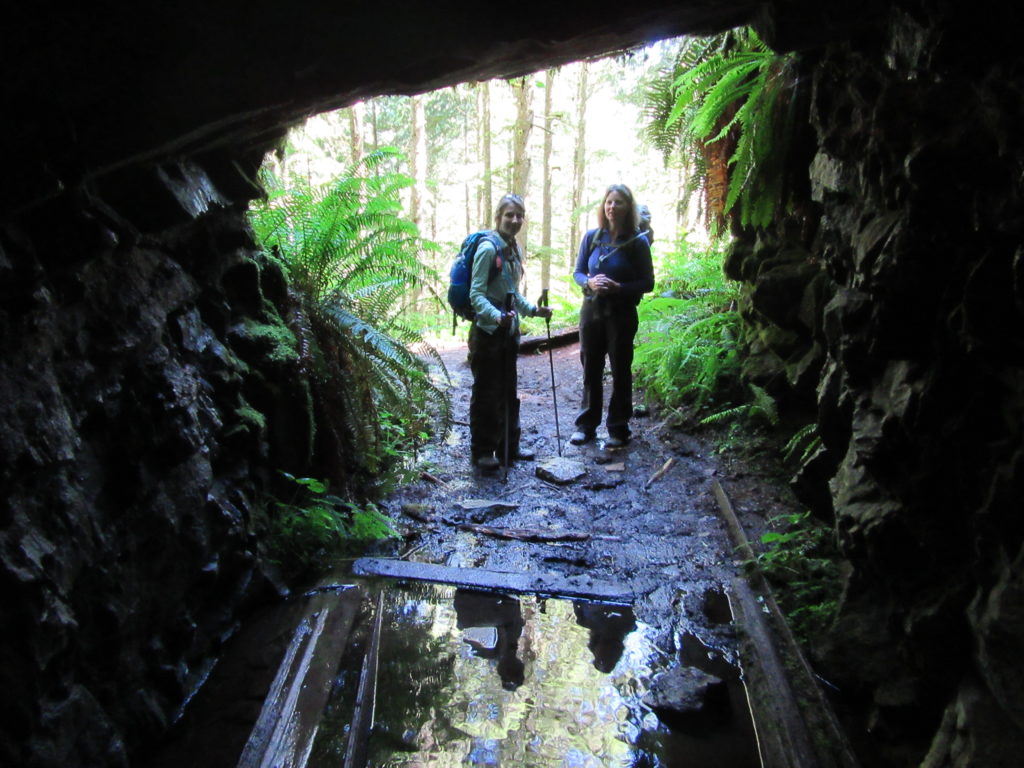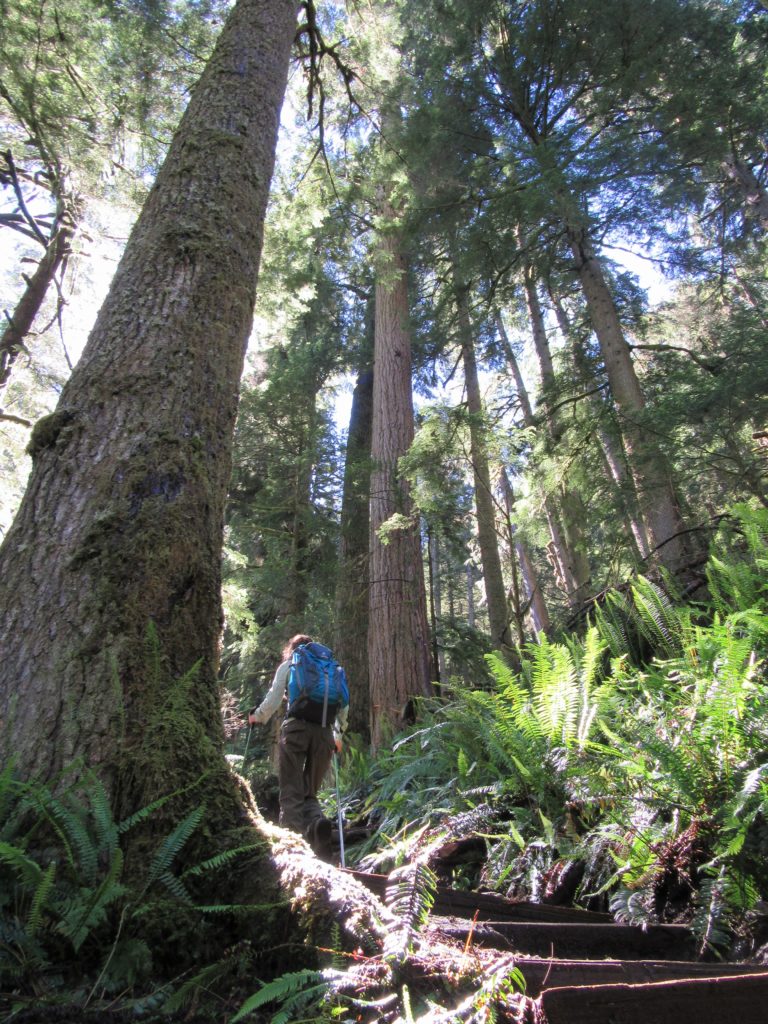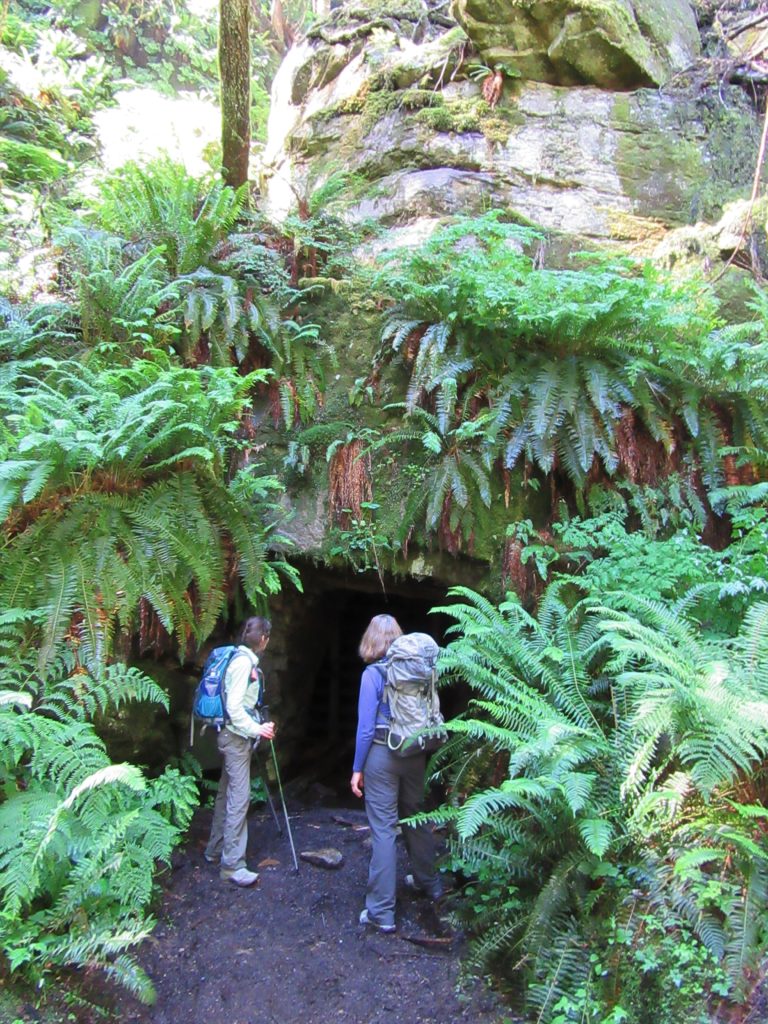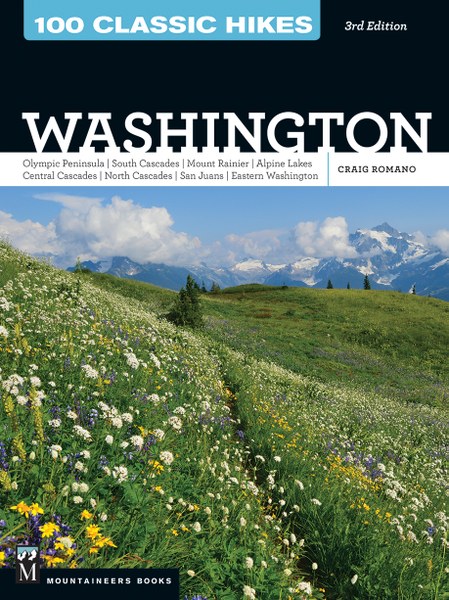Old Mine Trail — Gold above the Carbon

Quick Facts:
Location: Mount Rainier National Park
Land Agency: National Park Service
Round Trip: 3.0 miles roundtrip
Elevation Gain: 350 feet
Green Trails Map: Green Trails Mount Rainier National Park 269S
Contact: Mount Rainier National Park
Notes: Dogs prohibited; Drones prohibited; National Park fee or Interagency Pass required
Access: From Buckley, follow SR 165 south. At 10.4 miles (just beyond Fairfax Bridge) bear left onto the Carbon River Road and continue for 7.7 miles to trailhead.
Good to Know: kid-friendly, historic, exceptional old-growth, bike-hike possibility, snow-free winter hike, practice Leave No Trace principles

The Old Mine Trail is one of the least known trails within Mount Rainier National Park. Yet, this short path is easily accessible and can be explored year round. Before 2007 the hike to the old Washington Milling and Mining Company Mine in the CarbonRiver Valley was a mere .6 mile roundtrip. But in the autumn of 2006, heavy rainfall caused the Carbon River to flood and washout large sections of the Carbon River Road. Rather than reopen this prone-to-washouts road, park officials decided to permanently convert it to a trail. The road-trail is a pleasure to walk and can be done by just about any hiker young and old alike. The road-trail is also open to bicycles—so you can easily bike to the old trailhead and then do a short hike to the mine.
Start your hike by heading up the old Carbon River Road. The road-trail pulls away from the roaring glacier-fed river, but remains in earshot of its constant roaring. The walking is easy with very little elevation gain. The surrounding forest is stunning—an emerald cathedral of towering ancient conifers. On sunny days, the thick canopy will do its best to keep you well shaded. And on overcast days the layered tree crowns will spare you from a soaking. When sunlight filters through the misty understory it creates an ethereal setting.
At about 1.2 miles you’ll come to what looks like it once was a road pullout. It’s the old indiscreet Washington Mine Trail. Take it. After a short flat section, the trail climbs steeply. Insanely steep actually, but it’s a lot easier than it used to be. Trail crews recently upgraded this lightly traveled trail giving it a few tight switchbacks and lots of steps. You’re sure to get your heart rate up tackling this short but down-to-business trail.

Admire the towering old trees lining the way. Primeval monstrous Douglas-firs, hemlocks, and red cedars here hold up the sky letting very little sunlight filter through the thick and elevated canopy. Enough light touches the forest floor however to allow for a thick ground cover of bushy ferns and thick mosses. Vine maples, salal, and salmonberry add to the dense vegetation creating a jungle-like understory.
After about 300 feet of climbing reach the old mine shaft nearly hidden by big boughs of ferns. You can peek a few feet in where a gate prohibits any deep probing. It’s pretty dark and you won’t see much of this more than 150 foot long bore. A short stretch of tracks for the mine carts survives, but nothing else. A funicular (incline railway) once ran from here to the valley floor to transport workers and supplies up to the mine; and ore and workers back to the valley. A half dozen buildings once stood in this locale as well. You can see in the immediate area stumps and new growth where old growth trees were cleared and utilized in the construction of the mine buildings.
Unlike the nearby and copious old mines just outside of the national park boundary a little farther down the Carbon River Valley—coal was not mined here. In 1899, the same year that Mount Rainier National Park was established, the Washington Mining and Milling Company began looking for gold, silver and copper in the region. The company soon afterward made almost 40 claims, but never made any significant finds here. The company was responsible however for helping the park service build the original Carbon River Road more than a century ago. More than likely this mine was used for copper exploration. The Carbon River Valley downstream became a significant coal mining region and some successful mining operations also took place in Glacier Basin in the White River Valley within the park. But here in the park’s Carbon River Valley, the riches always were and remain, natural ones harvested by hikers in the form of incredible outdoors experiences and memories.

For detailed trusted information on the very best hikes in Mount Rainier National Park and the rest of Washington State, pick up a copy of my best-selling 100 Classic Hikes Washington (Mountaineers Books)